Dutchman’s Pipe
Aristolochia elegans, commonly called Dutchman’s Pipe or Calico Flower, is a vine that was introduced to Australia from South America and the West Indies as an easily cultivated ornamental plant. Unfortunately, like so many other ornamental plants they got out of cultivation and have naturalised and become huge pest species within several areas of Australia, earning them the title of a Restricted Invasive Plant. Furthermore Aristolochia elegans is in a similar family to a few native Australian plants that are food sources for several butterflies, including the now rare Ornithoptera richmondia or The Richmond Birdwing Butterfly. Unfortunately whilst the species are similar, Arisolochia elegans has poisionous leaves that kill all Australian butterflies despite the butterflies being highly attracted to the plant’s scent. Dutchman’s pipe is also suspected in poisoning livestock
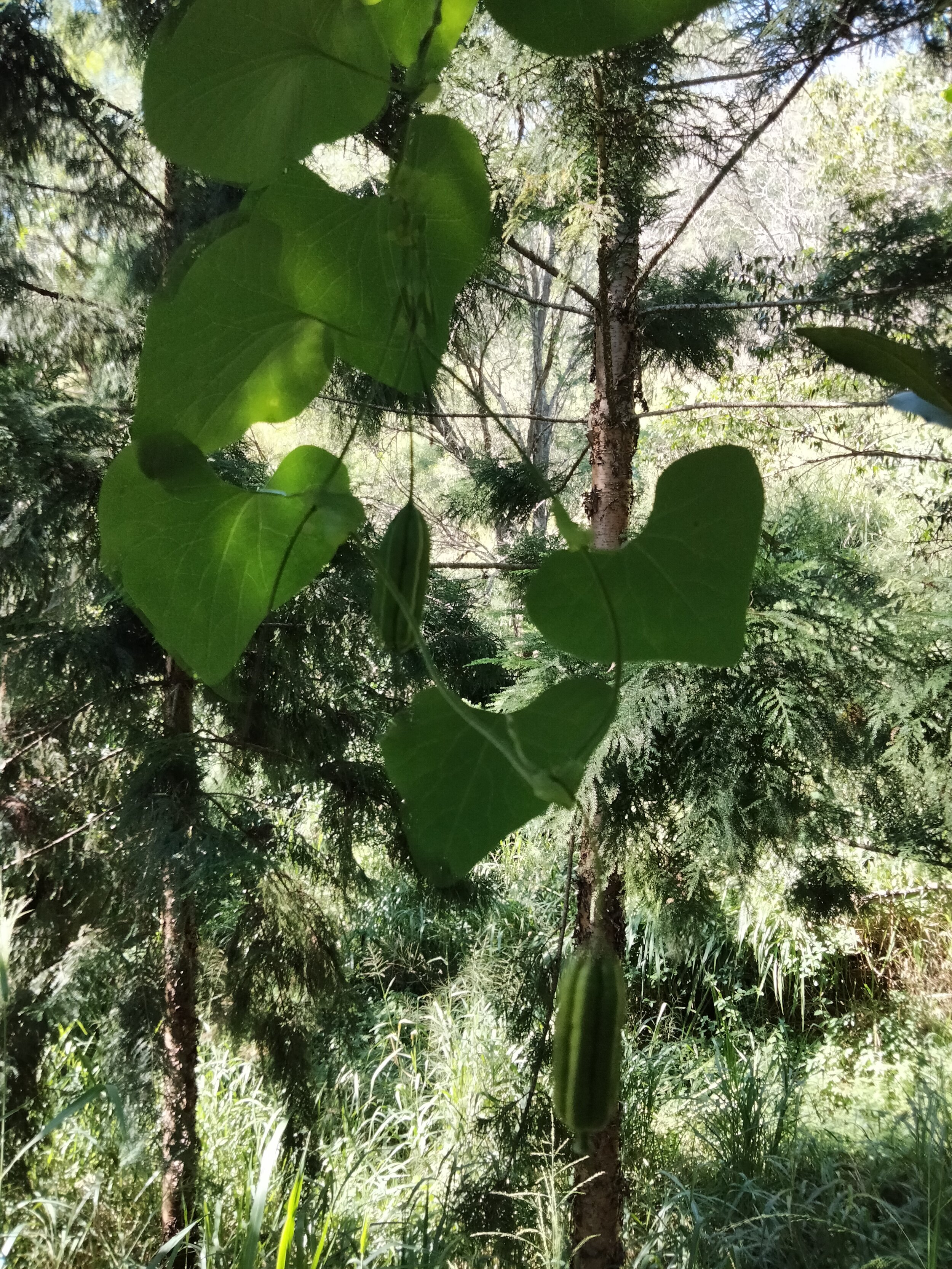
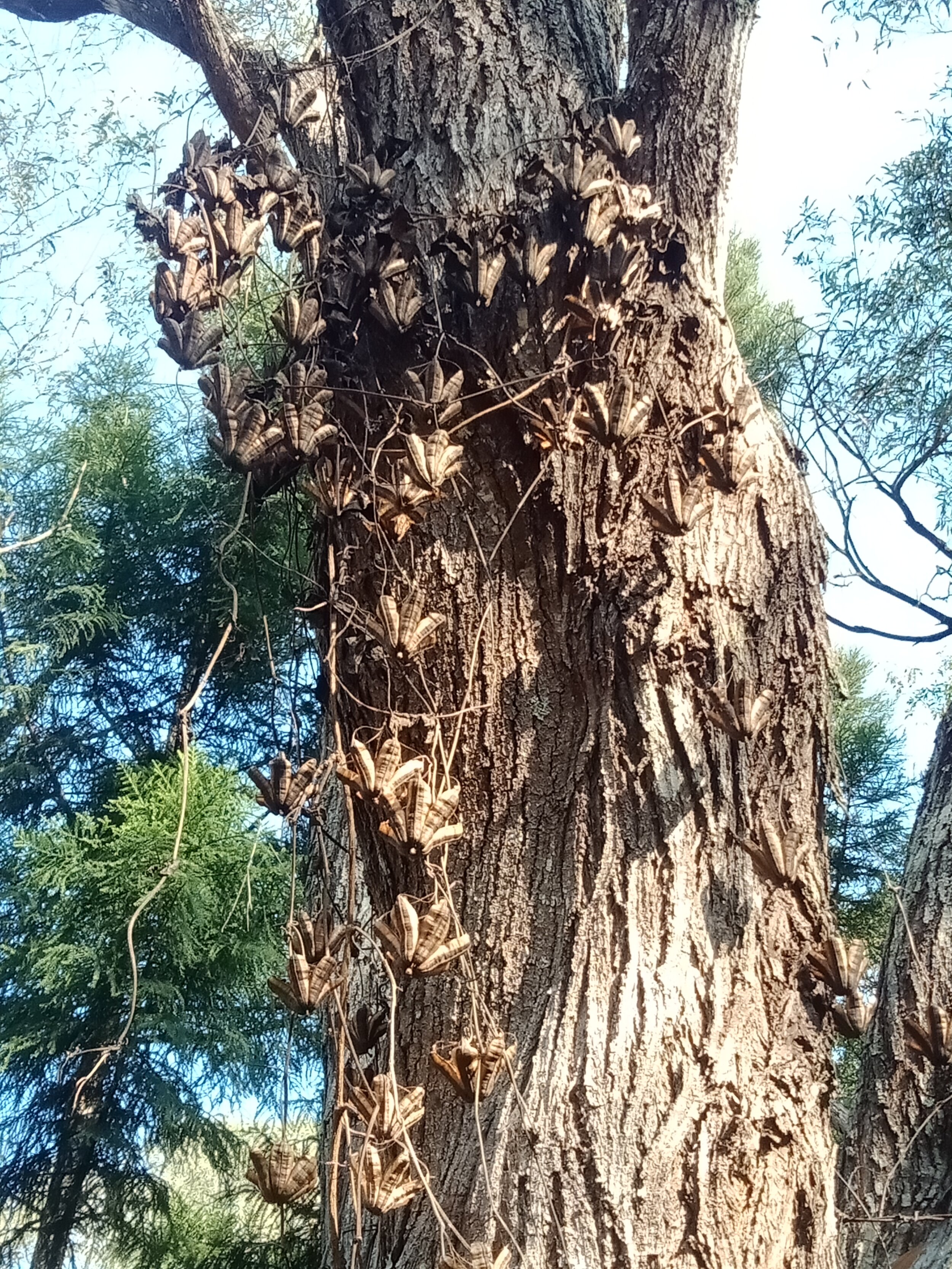

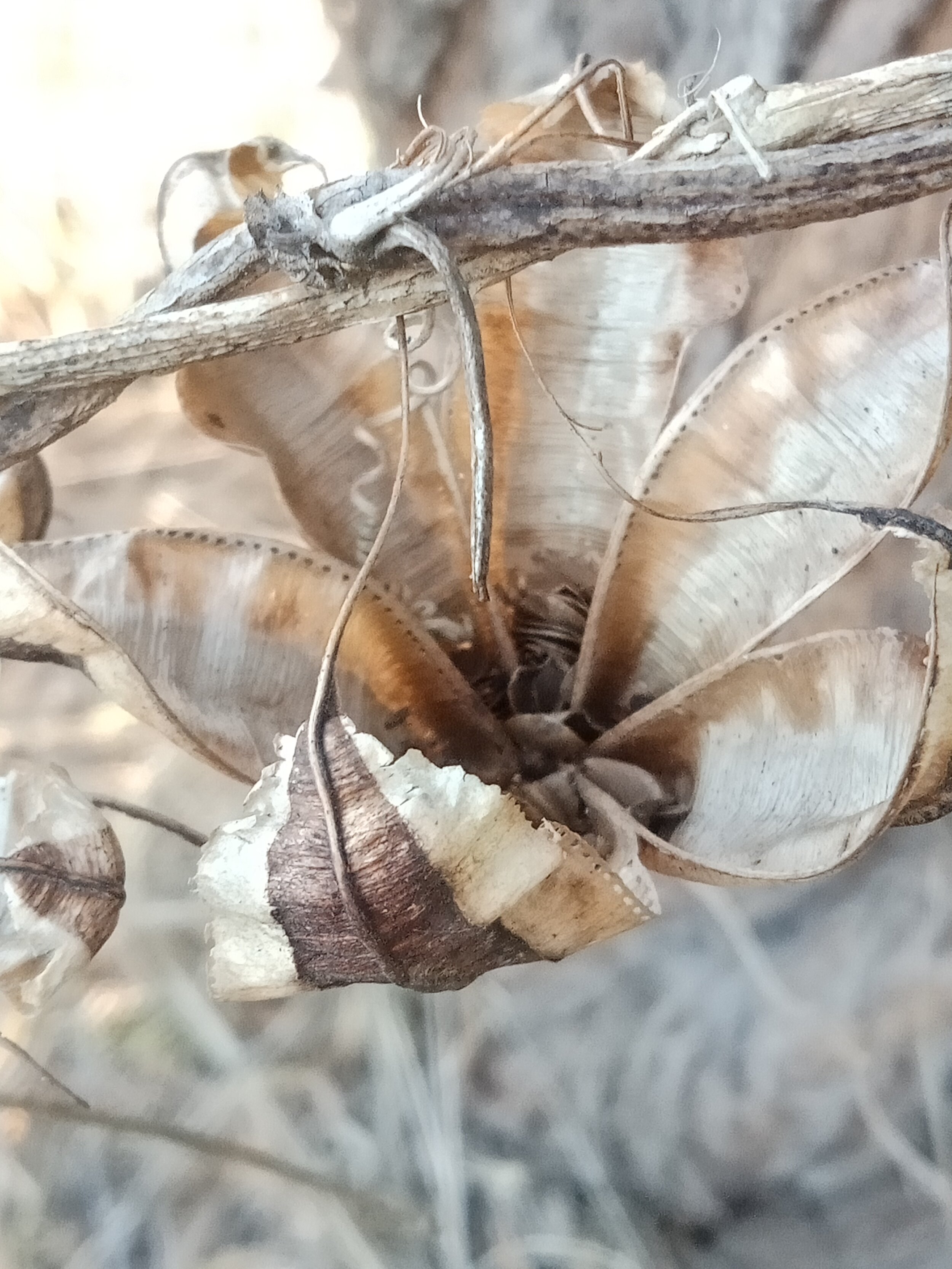
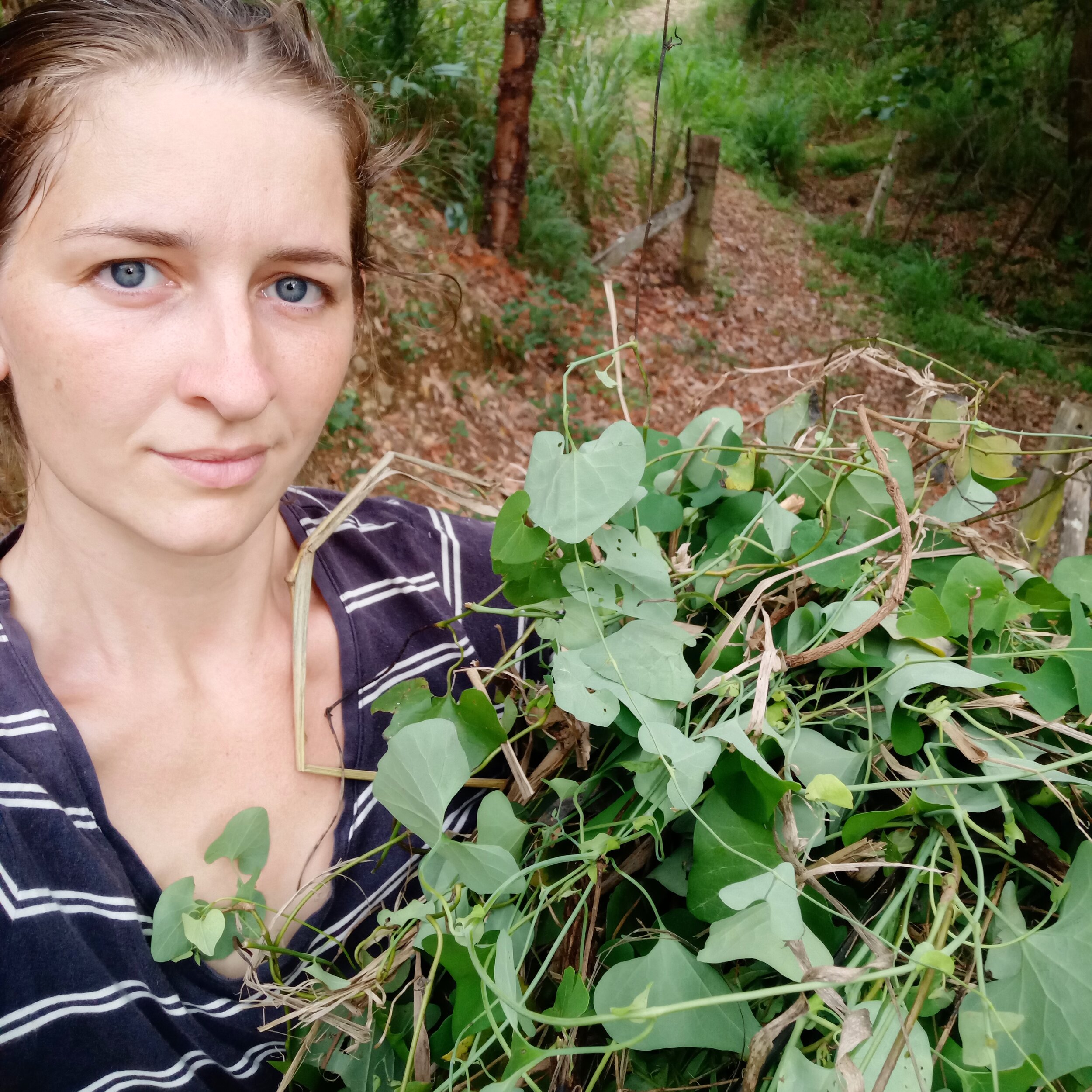
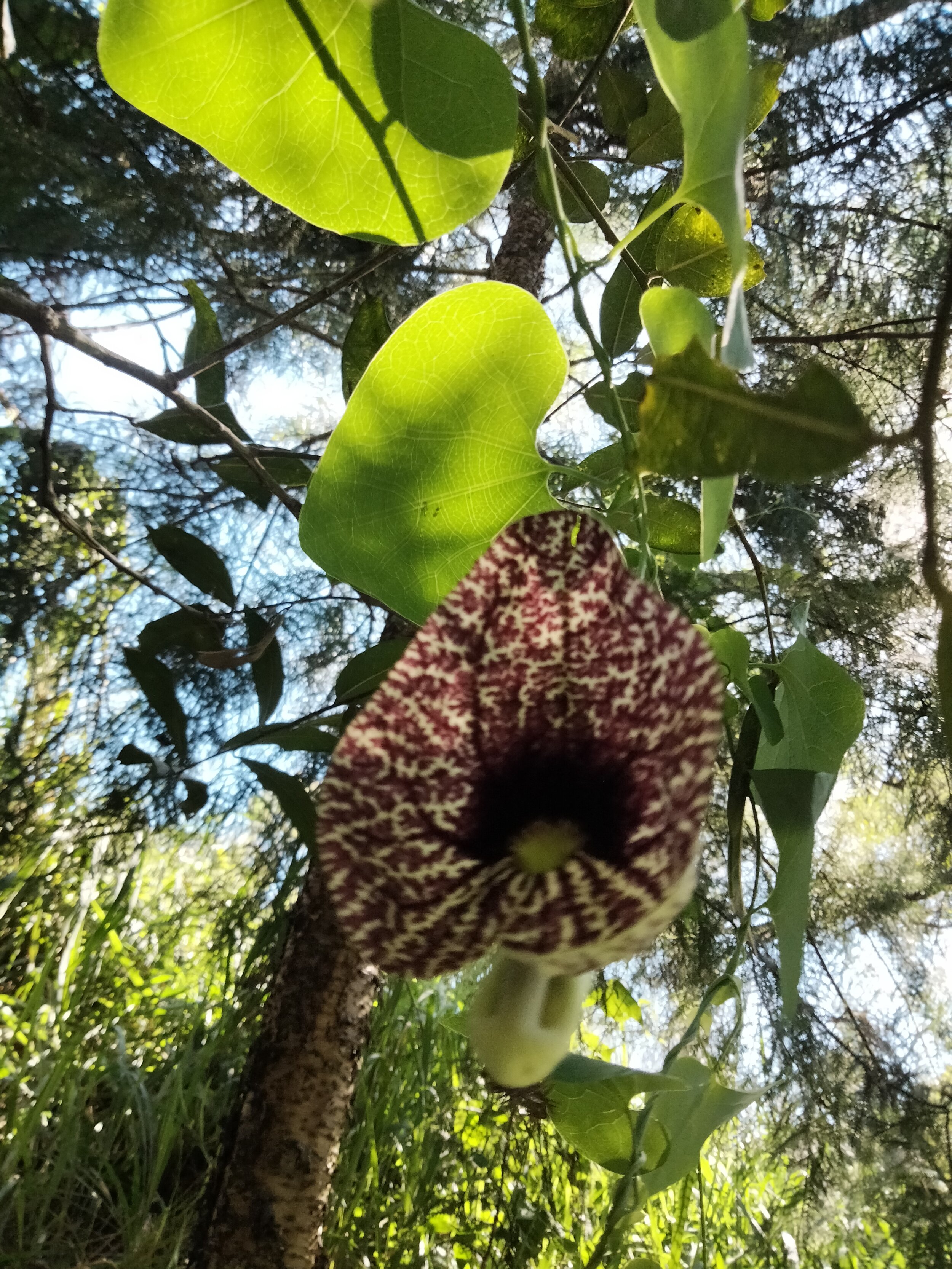
Growing Conditions
Dutchman’s Pipe thrive in rainforest type conditions as they prefer moist, fertile soils. The plants will begin on the ground and then find nearby plants to climb up to get amongst the tree top canopy where they flower more readily and the seed dispersal is at its greatest. Typically they grow to 3m tall but can grow to as much as 7m or beyond.
Spread
Flowers develop in Spring-Summer, pollinated by flies attracted to their carion-like odour, with the fruit maturing in late Summer, however it is not unknown for fruit to still be maturing as late as Winter in warmer regions. Mature Dutchman’s Pipe seed pods appear much like an upside-down open parachute in which the seeds sit loosely awaiting wind or animals to upend them spreading the seeds far. Seeds can remain in the open seed pods for a long period of time before being disturbed. This adds an extra frustrating element to removing plants that have already set seed amongst the canopy.
Eradication
As all part’s of the Dutchman’s Pipe vine are poisonous, it is highly recommended to wear protective gear including gloves and long sleeves before attempting to remove any plants. Eradicating Dutchman’s pipe is complicated by it’s propensity to set deep sprawling root systems that can root from each stem node and snap off easily at the base if pulled. Any root systems that remain behind will quickly regrow. Due to its destructive habit for endangered butterflies reducing spread and the number of plants is critical and this is one such plant where I won’t hesitate to use glyphosate painted directly onto the cut stump however there are no herbicide products specifically registered for the control of Dutchman’s pipe in Queensland. The Department of Agriculture and Fisheries recommends using Glysophate 360g/L at a rate of 1 part product to 2 parts water (e.g. 10 mL in 20 mL water). You can also opt to trace a vine back to it’s stump and then dig deep to remove the crown however as previously stated, any remnants will easily regrow and this method can also disturb a lot of nearby native vegetation. All flowers should be removed on sight as each mature fruit can produce around 350 seeds that are easily dispersed by wind.
If you are located within Queensland, Australia you have a General Biosecurity Obligation (GBO), as listed in the Biosecurity Act 2014, to take reasonable and practical steps to minimise the risks posed by Dutchman’s pipe.
Read More
Queensland Government Restricted Invasive Plants
Brisbane City Council Weed Identification Tool
DAF Factsheet (PDF)
